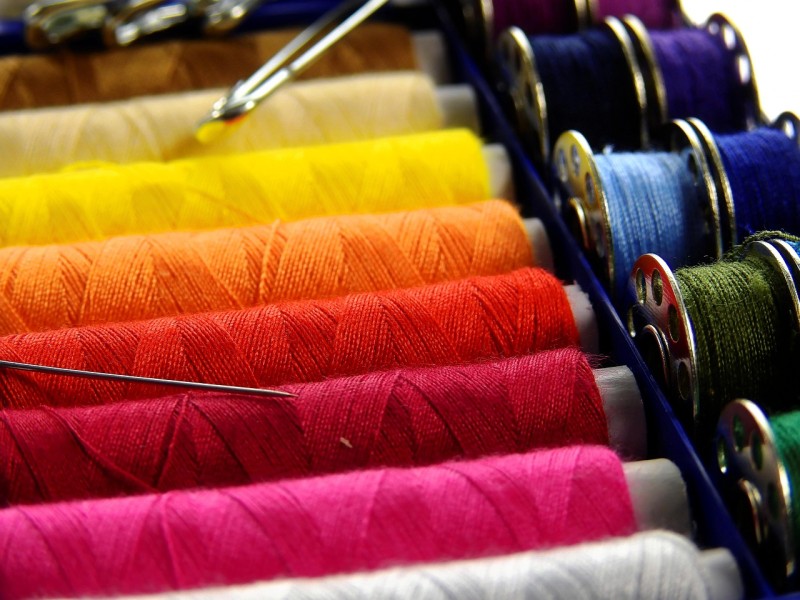In the high fashion industry, no detail is too small. While the threads don't get altitude like their fabrics counterparts, they still post on. The unsung heroes of high-performance threads are the high-performance threads that let garments not only look fabulous on the runway and the catwalk, but to have built-in longevity, durability, and strength to wear and time.
The Integral Role of Threads in High Fashion
The function is not the only thing threads provide, they also have to function as structural parts of the garment, and they have to add to the aesthetic. In high fashion, precision and perfection are what matter, and the quality of thread can affect how those end products turn out.
1. Durability and Longevity
The durability of the garments depends a lot on high-quality threads. They withstand breakage and furrying, thus keeping seams from breaking even under strain. This durability is critical to high-fashion items designed for multiple fittings, runway events, and photo shoots, and then into a consumer’s hands.
2. Aesthetic Consistency
The quality of stitching determines the appearance of a garment. Superior threads result in uniformity and smoothness of seams, which gives it a better look, as poor quality leaves the design with line irregularity and puckering, and there is no elegance to the sewn design.
3. Compatibility with Fabrics
Delicate or specialty fabrics tend to be used in high-fashion garments. These materials provide the necessary strength, but at the same time do not cause damage or distortion, and high-performance threads are designed to work harmoniously with such materials.
Innovations in High-Performance Threads
In the current era, thread technology is preferred by high-fashion designers who have expanded the scope of the textile industry.
1. Advanced Materials
But modern threads are made of a number of textured materials (textured thread), including polyester (polyester corespun thread), nylon, and even aramid fibers. Strong, elastic, and resistant to many environmental factors, these kinds of materials make for excellent high-fashion applications.
2. Smart Threads
Smart threads are specifically the result of the integration of technology into textiles. Electricity can be conducted, colors can change, or tuned to environmental stimuli, and therefore, these threads open the door to new avenues in high fashion with innovative design.
3. Sustainable Options
With the rising trend of the fashion industry in terms of green, eco-friendly threads that are made out of recycled or biodegradable materials are becoming increasingly popular. These threads pursue environmental goals of the industry in an appropriate manner, while at the same time they do not compromise on the performance.
Impact on Production Efficiency
The high fashion industry is one of the dominant users of high-performance threads due to its very high production efficiency.
1. Reduced Machine Downtime
Because of superior working threads, fewer machine stoppages and maintenance are required. The reliability of the process guarantees a better production process and a quicker turnaround.
2. Consistent Quality
The stitching is consistent using high-quality threads, which means there is no need to rework or have to adjust. Consistency is important for keeping fashion houses at a high standard because this medium does not accommodate variation.
3. Enhanced Worker Productivity
Using threads that glide easily through fabrics and machines makes seamstresses and tailors more productive, thereby causing enhanced productivity and joy between them and their machines.
Understanding the Thread’s Role Between Runway and Rack
On one hand, the artistic vision of production is vital for the runway, but production for retail is equally important. It is the efficient manufacturing of high-fashion garments with high-performance threads.
- Reduced Thread Breakage and Downtime: In mass production, regular thread breaks due to poor quality can significantly obstruct the flow of high-fashion garment manufacturing, leading to costly delays and squandered resources. Threads with high performance that possess consistent strength and smooth finishes lower breakage, ensuring more uninterrupted and efficient sewing processes.
- Minimized Skipped Stitches and Rework: The exact standards of high fashion demand impeccable construction. Skipped stitches and seam imperfections are unacceptable. Threads of superior quality ensure reliable stitch creation, decreasing the need for expensive and time-consuming rework, which is particularly vital for intricate and delicate high-fashion items.
- Compatibility with Specialized Machinery: High-fashion production often employs specialized sewing machines and methods to handle delicate fabrics and craft intricate details. Threads of high performance are engineered to seamlessly work with these specialized machines, guaranteeing optimal performance and avoiding damage to fragile materials.
- Facilitating Hand-Sewing and Couture Techniques: Many high-fashion garments feature extensive hand-sewing and couture techniques. Threads designed for hand-sewing of high quality, typically made from silk or other fine materials, offer the strength, flexibility, and visual appeal needed for these detailed techniques, ensuring both resilience and a luxurious finish.
The Sustainable Thread: A Growing Imperative in Luxury
The increasing awareness of environmental accountability is also impacting the domain of high fashion. Both designers and consumers are seeking more sustainable options, including the choice of thread.
- Recycled and Upcycled Threads: Innovative producers are now developing high-performance threads from recycled materials, such as plastic bottles or textile waste. These threads offer a more sustainable option without compromising the strength, performance, or aesthetic characteristics necessary for high-fashion uses.
- Organic and Natural Threads: Threads made from organic cotton, silk, or other natural fibers provide a more eco-friendly alternative, aligning with the growing demand for sustainable luxury. Advancements in processing these natural fibers are enhancing their strength and durability, making them increasingly appropriate for high-fashion garments.
- Sustainable Dyeing and Finishing Processes: The ecological impact of thread manufacturing also includes dyeing and finishing. Producers are adopting more sustainable practices, such as using low-impact dyes and water-efficient methods, to minimize the environmental footprint of their high-performance threads.
Conclusion
The seemingly humble thread is the invisible architect of excellence in a high fashion, captivating world where dreams are woven into fabric and artistry taken in the most tangible form. The silent partner is responsible for the structural integrity of delicate designs, subtle aesthetic harmony, enduring luxury of investment pieces, as well as efficient production. And as high fashion keeps innovating the way the world dresses while responding to the public’s increasing demand for sustainability, the selection and innovation of high-performance threads will only matter more.
Be it on the ethereal beauty of the runway or the purist embrace of elegance associated with the retail rack, garment construction’s unsung heroes are key to turning visionary artistry into enduring pieces of wearable luxury: even the tiniest details matter for that. While high-performance threads do not merely possess functional requirements, but their strength, finesse, and aesthetic compatibility are utterly critical to a high-fashion construction, each exquisite creation must also withstand the test of time and be the result of the pinnacle of craftsmanship.


